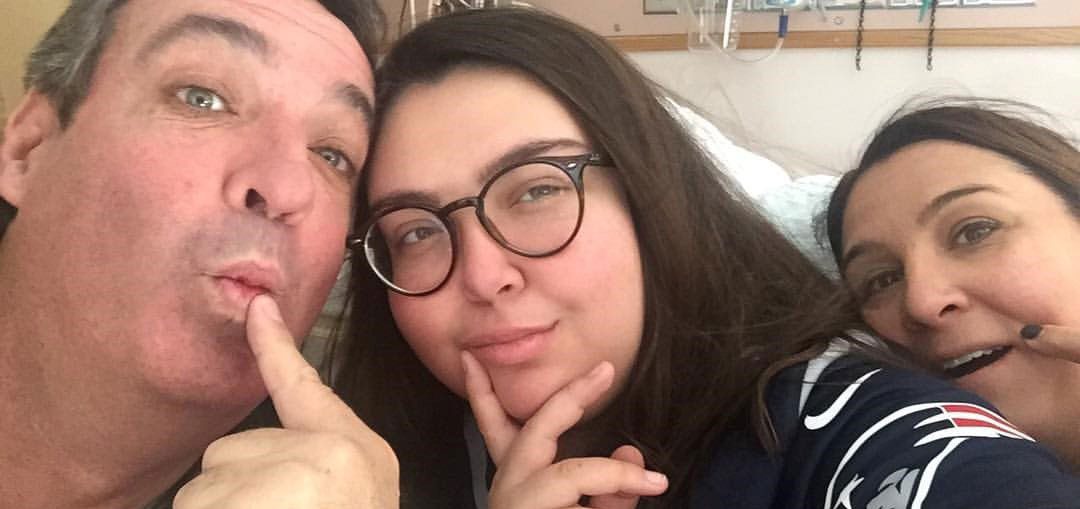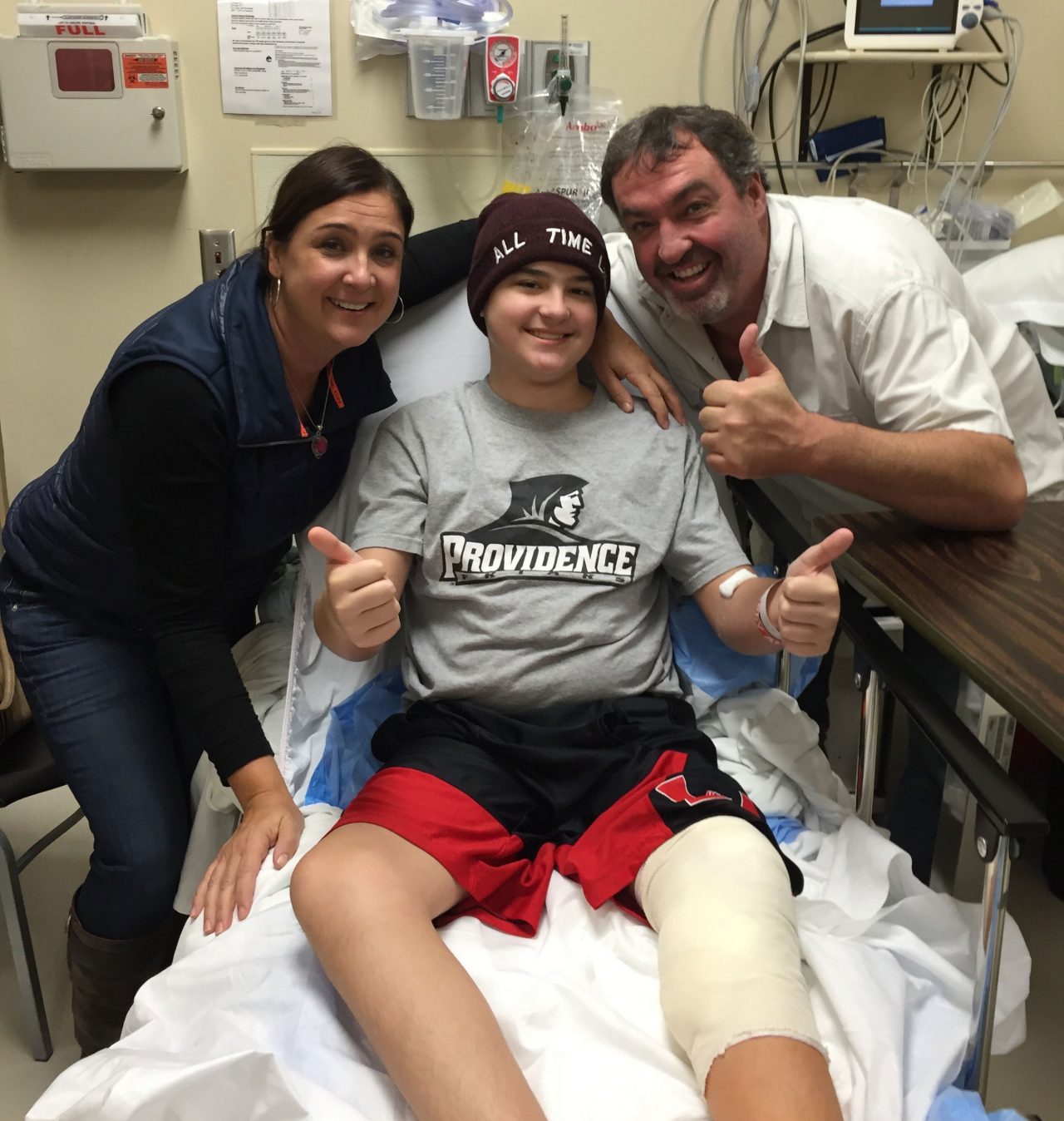Becoming an Advocate for Kids with Ehlers-Danlos Syndrome

A lack of treatment options for a rare childhood illness turns one mom into a crusader.
When disease strikes your child, it blindsides you. You can find yourself transformed from parent — into caregiver — into advocate.
Donna Sullivan knew early on that her daughter, Michaela, had a few medical quirks. “As a young child, her coordination was a little off and her muscle tone was low. She struggled to ride a bike and climb. But she was an incredibly smart kid, so she compensated,” she says. But by early middle school, Michaela’s health started to fall apart. She had a curvature of the spine — scoliosis — that didn’t improve with bracing, so doctors performed spinal fusion surgery. The surgery didn’t hold for long, as her spine began to shift. Michaela’s pain got so severe that she had to be hospitalized for seven weeks.
A geneticist evaluated Michaela and her two siblings, and discovered the family shares an inherited connective tissue disorder called Ehlers-Danlos syndrome (EDS). It’s caused by a defect of collagen — the body’s main scaffolding protein that holds bones in place. Without working collagen, the joints move beyond their normal range and can easily dislocate. Depending on the child, EDS can also damage other organs, like the heart and digestive tract, as well as affect the skin, with such symptoms as bruising easily, wounding easily, and poor healing or scaring.
YOU MIGHT ALSO LIKE: What #IGiveBeyond Is About
It’s all in your head
The pain from both EDS and the surgeries needed to treat it is intense. Yet the rarity of the disease (it affects just 1 out of every 2,500 to 5,000 people), coupled with the young age of its patients, leads to a lot of misunderstanding — and sometimes mistreatment — within the medical community.
Some of Michaela’s doctors began to think the physical pain from her Ehlers-Danlos was purely psychological. “Michaela would be in pain, and she’d tell me, ‘I don’t think my doctors believe me. They smile and seem to pretend I’m not in pain, as if THAT is going to make it go away.’” Donna says.
The family followed their doctors’ advice, putting Michaela through grueling rounds of physical therapy, tests, and procedures, including another spinal fusion surgery. Her functionality improved, but her pain continued, and soon her health started to decline. “She lost feeling and strength in her legs. She became incontinent. She started falling. We reached a point last year when she couldn’t even walk up the stairs,” Donna says. They reached out to specialist after specialist. None had answers.
“As a parent, your job is to make sure your kids are safe and protect them from being hurt. Unfortunately, the medical process can also unintentionally hurt them,” she says. “Common widespread beliefs about pediatric pain can prevent physicians from looking deeper into the physical cause. My daughter was missing school and all the best parts of her childhood because we couldn’t get on top of her pain. It was heartbreaking to watch.”
Ironically, sometimes when Ehlers-Danlos parents push harder for answers, it can backfire. Many parents within the Ehlers-Danlos community have been accused of Munchausen syndrome by proxy, a rare form of child abuse in which parents feign their child’s illness simply to get attention for themselves. “This is why it is so important to start raising awareness about EDS,” Donna says.

Another child, another medical mystery
As the Sullivans navigated Michaela’s care, they were hit with yet another medical crisis. In 2014, their 10-year-old son, Aidan, fell while snowboarding. Within two weeks, his foot had turned cool and extremely sensitive to touch. Aidan’s doctors diagnosed him with complex regional pain syndrome (CRPS), a condition that causes pain so intense that it’s been compared to childbirth or amputation. CRPS has been nicknamed “the suicide disease,” for driving patients to the point of taking their own life.
Aidan began treatment with physical therapy and nerve blocks. However, he seemed to be getting worse. Some of Aidan’s doctors started to suspect that he had EDS, too. The family once again went on the hunt, this time for an orthopedic specialist with EDS experience. They found one — but he was all the way across the country, in Wisconsin. So, they rented a Winnebago (Aidan was in too much pain to fly), and made the 1,100-mile journey from their home in Rhode Island. Aidan winced with every bump the RV hit. “Getting him out there was really stressful, but it was one of the best things we did for him,” his father, Bob Sullivan, says. “On the ride back we were singing and laughing — he was a whole different kid.”
Another surgery at Johns Hopkins in Maryland brought Aidan’s pain down even more, and restored movement to his toes and foot. Since then, he’s had several ups and downs, including the discovery of a growth plate injury/knee deformity that has contributed to more pain and disability.
YOU MIGHT ALSO LIKE: Cory's Crusade
Effective help is out there
In November 2015, after countless tests and doctors’ visits, Michaela got some promising news. A specialist in Rhode Island diagnosed her with tethered cord syndrome, a condition in which the spinal cord is abnormally attached to the bones of the spine, leading to severe back and leg pain, along with incontinence.
The doctor operated to release the tethered cord, which relieved Michaela’s bladder issues and helped her regain strength in her leg. Though she still struggles with EDS- related vertebrae and disc problems in her back, she was able to gain enough control over these issues to start college in the fall of 2016. “My daughter has gotten her life back. She’s enjoying being a normal teenager. It’s a dream!” Donna says.
The family has also connected with a new medical team at a pediatric hospital that has an Ehlers-Danlos clinic. Aidan is undergoing surgery to repair his knee, and he will take part in a pediatric rehabilitation program designed to help kids with CRPS and EDS regain function and mobility. Though he’s still in a wheelchair, the family is hopeful that he’ll one day walk again.
Building a road map
These small victories came only after countless hours of investigation, and negotiation with one medical team after another. “It’s become a full-time job for us,” Bob says. “Since there is no cure or proven treatment, we have kind of had to forge our own path.”
The experience has introduced the Sullivans to other EDS parents who’ve faced similar struggles. “Talking to other families was probably the best thing that ever happened to us, because we were able to share stories and find things that helped,” Donna says.
The Sullivans also got support from the Ehlers-Danlos National Foundation and The Coalition Against Pediatric Pain (TCAPP). Both organizations formed within the last few years to help give EDS parents a roadmap to the right treatments. Donna is now a passionate advocate for TCAPP. “Our primary goal is to raise awareness in the medical community about these conditions and the needs of these more complex patients, and to work with families to let them know they’re not alone,” she says.
Even while dealing with her own children’s struggles, Sullivan campaigns tirelessly for other families. She’s helped a mother and daughter who’d traveled from Europe find an apartment, and doctors. She’s sat vigil in more than one hospital room as a child other than her own clung to life. And she spends part of every day online, offering advice to the newly diagnosed through TCAPP’s Facebook page. “We want to share information with other families to prevent them from having to go through all the things we’ve had to go through emotionally as a family,” she says.
EDS steamrolled Sullivan’s family. They’ve fought back valiantly, pushing forward against the challenges. Despite the monumental effort she’s put into caring for EDS kids, Sullivan is quick to point out that she’s just one of many heroes in this fight. “I’m part of this army of moms who are trying to help kids who are stuck in the margins of medicine,” she says. “Doctors tell you what they can’t do, but they don’t always offer alternatives for what they CAN do. There is a lot that can be done to help these kids have a better quality of life.”
For more information about Ehlers-Danlos syndrome, visit TCAPP and the Ehlers-Danlos National Foundation.
Updated:
February 13, 2017
Reviewed By:
Janet O’Dell, RN